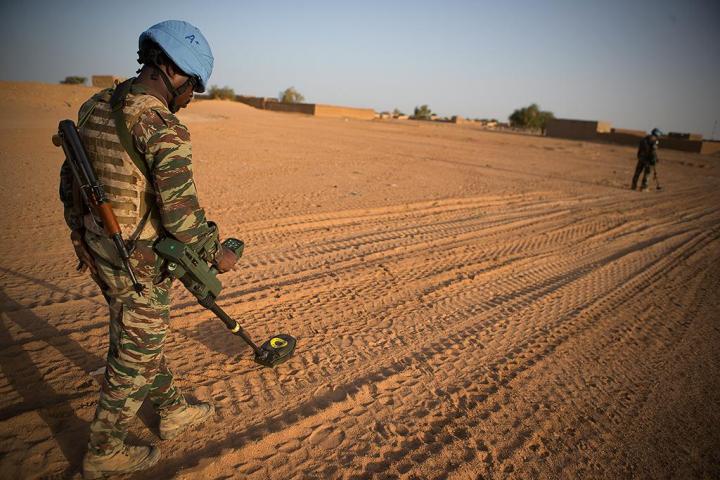Capacity-building activities on nuclear security detection architecture
“Establishing a nuclear security detection architecture is an endeavour that involves many agencies and requires awareness at all levels,” said Thierry Pelletier, Senior Nuclear Security Officer at the IAEA.

The IAEA kicked off a series of virtual capacity building activities on national nuclear security detection architecture (NSDA) with an awareness-raising workshop for law enforcement, customs officers, military officials and nuclear regulators from the Caribbean.
“Establishing a nuclear security detection architecture is an endeavour that involves many agencies and requires awareness at all levels,” said Thierry Pelletier, Senior Nuclear Security Officer at the IAEA. “The first step is the appreciation by all competent authorities of their own roles and responsibilities in the matters of detecting material lost or stolen.”
The workshop, held from 22 to 26 February 2021, gathered participants from Antigua and Barbuda, Belize, Guyana, Jamaica, Trinidad and Tobago for an introduction to and practical exercises for establishing a national framework for detecting nuclear or other radioactive material that may have been lost, misplaced, stolen or otherwise fallen out of regulatory control. A similar workshop is planned for Spanish-speaking countries in Latin America in March. Building on the Nuclear Security Threats and Risks: Material Out of Regulatory Control e-learning course, these introductory workshops are the first in a series of training activities on nuclear security detection.
Detection is the initial awareness of a criminal or unauthorized act, involving nuclear or other radioactive material out of regulatory control. As a State-level framework, a robust nuclear security detection architecture integrates threat assessment, detection by information alert and/or instrument alarms. The initial assessment activities help to identify a potential nuclear security event. Prevention, detection and response are interrelated and must work seamlessly together.
In a series of scenario-based tabletop exercises, the participants worked with counterparts from other countries through the entire process to establish a national nuclear security detection architecture for a fictional country. During this practical segment, participants wrote and completed a risk-informed nuclear security detection strategy based on potential threats to the fictional country, including materials and potential adversaries of concern. The participants then applied their strategy to the development of operational concepts to detect radioactive or nuclear material out of regulatory control through instrument alarms and information alerts. This exercise provides insightful information on critical steps to enhance nuclear security.
“It is a ‘needle in a haystack’ problem,” said Jordan Swarthout, Nuclear Security Officer at the IAEA and a course instructor. “The NSDA is a State-level system that organizes resources — human and technical—in the best position to find the needle’.”
“It is essential for Trinidad and Tobago, as it is for other jurisdictions, to develop and maintain a robust nuclear security detection architecture to ensure the prevention of illicit trafficking of nuclear or other radioactive material through our borders,” said Casandra Seetahal, Legal Counsel, Office of the Attorney General and Ministry of Legal Affairs, Trinidad and Tobago. “In a series of hands-on exercises, we went step-by-step establishing a robust nuclear security detection architecture; and will be able to re-create the process at home with all the relevant agencies.”










